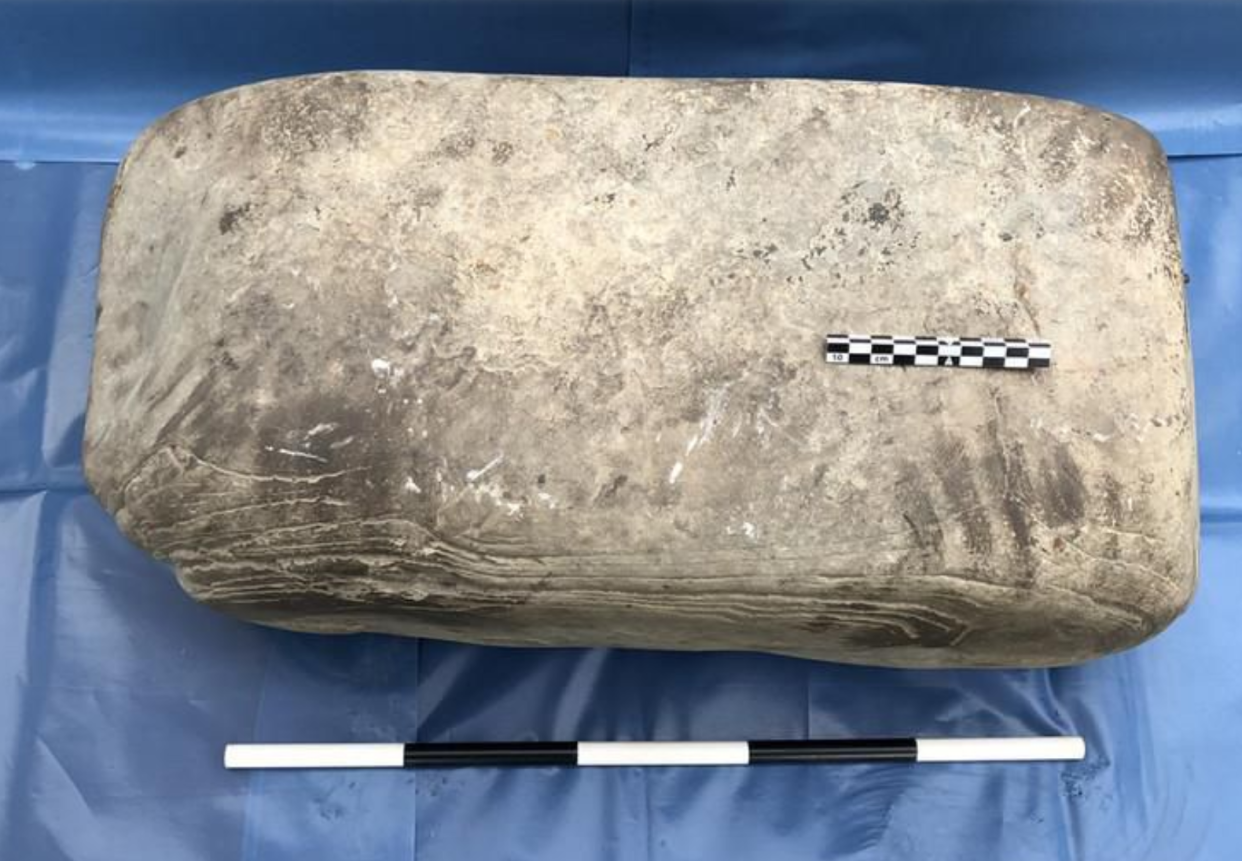Ancient handprint from ‘lost people’ of Scotland found on island

Archaeologists are racing to rescue a forge with handprints from one of Europe’s ‘lost people’ – the Picts – before it is swallowed by the tide.
The Picts were a group of tribes who spoke a now-extinct language and lived in parts of Scotland in the late Iron Age and Early Medieval period.
The Smithsonian says the Picts are often described as ‘Europe’s lost people’ because their writings have not survived, and only a handful of sites have been found.
The site located on the Orkney Islands has revealed a sooty imprint of what is believed to be a coppersmith’s hands and knees, which may be 1500 years old.
MOST POPULAR STORIES ON YAHOO UK TODAY
Blood Moon: How to watch the longest total lunar eclipse this century on Friday
Yahoo UK Pictures of the week: Roads, rides and royals
Why do people think the Blood Moon heralds the end of the world?
Shock brawl breaks out in MacDonald’s over ‘free soft drink’
Here’s the scientific reasons why British people can’t cope with the heatwave
Dr Stephen Dockrill, Senior Lecturer in Archaeology at the University of Bradford explains: ‘Analysis of crucible fragments and the floor deposits demonstrated that a copper smith worked in the building.
‘The analysis of the floor enables us to say with confidence where the smith worked, next to a hearth and two stone anvils.
‘The biggest surprise came when we lifted the larger stone anvil and cleaned it; we could see carbon imprints of the smith’s knees and hands.”
The small cellular building, dating to a period between the 6th to 9th century AD, was semi-subterranean.
It was entered via steps and a curved corridor, which would have minimised the amount of light entering the smithy, allowing the smith to assess the temperature of the hot metal based on its colour.
Scientific analysis at Bradford will reveal what was on the smith’s hands to produce the prints and explore reasons for their remarkable preservation.

 Yahoo News
Yahoo News 

